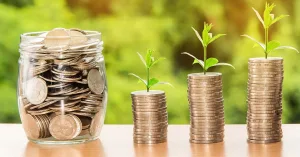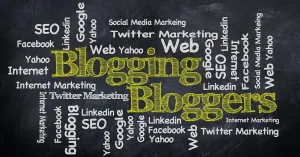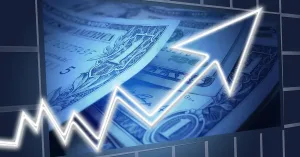Have you ever considered downsizing your lifestyle to reduce your environmental footprint, get out of debt and save money? The fact is, there are many ways consumers can downsize to help the planet and get out of debt while saving money.
When deciding how to be a more sustainable consumer, there are many things to consider: organic food, second-hand shopping, eco-friendly products, etc. And all of these are important in the quest for sustainability.
Nobody wants to spend money unnecessarily, but that doesn't mean you have to give up your lifestyle completely. It's time to stop and realize that the world has changed. Nowadays, various great alternatives could save you money and help the planet.
Are you ready to become a conservationist? Are you ready to start saving money, helping the environment, and living a greener lifestyle?
We may even take measures to ensure that our purchases serve us for as long as possible and hold their value over time - like buying stylish but pricey products and keeping them in good condition. But with our consumption habits, we are dramatically undervaluing a vital resource: Earth itself and the services it provides humanity.
How Downsizing Helps Consumers Save Money While Going Green
If you don't want to spend a lot of money on organic food, there are other ways to go green without shelling out big bucks.
"Downsizing is one of the best ways consumers can save money and go green," said Andrea Woroch, consumer savings expert. "You pay less for smaller packages and quantities of items, but it also allows you to control how much you use."
Buying in bulk may seem cheaper, but it could cost more in the long run because you will have to pay for storage space and extra packaging. So instead of stocking up on paper towels or toilet paper, buy them in small quantities, so you only pay for what you need.
You can also save money by buying smaller food items at the grocery store. For example, a 24-pack of bottled water costs about $4.99 on average compared with a case of 12 bottles that cost about $2.50.
If you're planning a picnic or backyard barbecue this summer, buy several 6-packs rather than one big case to don't waste any of it.
All of these are great ways to save money and go green, but the truth is many people have trouble saving money due to old or unnecessary debt.
11 Ways To Downsize Your Debt
The explosive growth in consumer debt over the past 20 years is not just a problem for working families trying to make ends meet. It has also contributed to a growing climate crisis.
The manufacturing, transportation, and disposal of all that "stuff" funded by debt have helped create our global carbon emissions problem. Debt-fueled consumption also leaves many people feeling like they are drowning in stuff they don't need or can't afford, which creates stress and anxiety.
You can free up funds you might otherwise spend on interest by paying down your debt. And suppose your debt is in the form of credit card balances or personal loans.
You can also help reduce the demand for fossil fuels since credit cards are made from petroleum products, and personal loans are funded by creating new money by the banking system — both processes require fossil fuel use.
Here are eleven ways to downsize your debt, help the planet and save money.
1. Save The Planet And Your Pocket
The giant energy hog in your home is probably your HVAC (heating, ventilation, and air conditioning) system. Still, there are several things you can do to reduce the amount of energy it uses.
One of the easiest ways to cut down on how much energy you use is to turn up the temperature on your thermostat. When you're not home, keep it up 7 degrees or more from what you have it set at when you're home.
If you don't want to turn up the thermostat that high, use an automated thermostat with a "vacation" setting. It will adjust itself automatically to save energy while you're away.
2. Save Your Energy And Your Energy Spend
Some of the most overlooked appliances in your house run on electricity even if they're turned off. While these are not huge savings individually, they add up quickly when you consider how many times a day they're used or left on standby.
They also consume a surprising amount of electricity over time. This is called phantom power or vampire power because they use electricity without doing any work!
Reduce the weight of your car by removing any excess weight you don't need — like golf clubs, sports equipment, children's toys, etc. This will make it more fuel-efficient.
Keep your tires properly inflated and aligned to improve gas mileage by up to 3%. Properly inflated tires also improve safety!
3. Pay Off High-Interest Debt First
Start with paying off your highest interest rate debts. For example, credit cards typically charge much higher interest rates than student loans or mortgages.
As you pay off high-interest debts, you will save money on interest payments and free up cash flow to pay off other debts faster or invest in assets that produce income over time.
4. Stop Using Credit Cards For New Purchases
Switch instead to a debit card linked directly to your checking account. This will help you avoid building up additional debt and allow you to pay down what you already owe faster. Cash is another good option because it's impossible to spend more than you have.
5. Consolidate Your Credit Card Debt Into One Account
Consolidate your credit card debt into one account at a lower interest rate, especially with a credit union or community bank. Credit unions are great options because they are not-for-profit organizations that focus on providing quality service with lower interest rates on loans—and better customer service overall.
Plus, many credit unions offer green loans for organic farmers, low-interest personal loans for solar power systems, electric cars, home energy efficiency improvements, and shared branching to access your account at another credit union across town or the country without a fee.
6. Know What You Owe
If you've forgotten how much you owe, pull your credit report to see your complete list of debts and determine how much you owe on each debt.
Then create a simple chart to track all of your debts, including the interest rates and minimum payments due each month. This will give you a clear picture of your monthly expenses and tell you where you can make cuts.
7. Decide What You Can Repay
Once you have a clear picture of what you owe, it's time to decide what you can realistically afford to pay each month. The number is realistic for your income and budget, considering necessities like rent, groceries, child care, and transportation costs.
It's magnificent if the minimum payment is what's realistic for now — start there and add an extra $10 or $20 when possible to make progress at a faster rate later on.
8. Refinance What You Keep
If you decide it makes sense for you to keep some of your debt, you may be able to refinance it at a lower interest rate through LendingTree and use that extra money for other important financial goals (or to spend less money each month).
9. Increase Income And Reduce Expenses
The first step is to look at increasing your income and reducing expenses. There are many ways to improve your revenue, such as taking on a second job, selling unused items, or starting a side business.
Reducing expenses can include cutting out unnecessary things such as cable, entertainment, dining out, etc.
10. Borrow Cheaper Money
Switch to a cheaper credit card by transferring balances or paying off an expensive card with a cash advance from a cheaper one and then paying it down.
11. Get Help When Needed
If you have multiple cards and loans, consider consolidating them. If you're having trouble managing your debt, don't hesitate to seek professional help from a credit counselor.
If you're in debt, don't lose hope. There are plenty of steps you can take to find relief from your debt and get on the path toward financial independence. Reducing your debt can be beneficial. It allows you to save money, helps reduce your carbon footprint, and will enable you to breathe a little easier.
However, no one wants to cut into their lifestyles or drastically change their lifestyle to become debt-free. These eleven strategies can help put you back in control of your finances by changing your spending habits and finding relief through simplification.
Sometimes, it's not about managing the cash that comes in; instead, it's about reorganizing it.
References:
https://www.greenamerica.org/consume-less-live-more/upsides-downsizing
https://www.lifestylecommunities.com.au/downsize-your-home-downsize-your-carbon-footprint
https://njaes.rutgers.edu/sshw/message/message.php?p=Finance&m=393





















Add comment